There are a plethora of choices that a music listener can choose from, when looking to buy a well mannered, proper sounding headphone in the $200 – 400 range. This range fills a void that usually lands between what the headphone industry coins as something between the “consumer” and the “professional” categories. For those wanting their favorite types of music to sound more enjoyable, with realistic soundstage and instruments or voices that sound like real instruments and voices usually need to look at headphones that more likely will fetch an entrance fee upwards of $300 . Of course price is very subjective and sometimes you get less than your money’s worth. But other times if you do your research and choose the right brand and the right model you can get a respectable sounding headphone for a fair and decent price.
Enter Beyerdynamic. They have been around since 1924 and released their first headphone in 1937, the DT 48, which were in production until 2012. Their headphone lineup premiered in categories from entry level to professional ranging in price from $150 to $1500. Beyer through their years of research and design knows how to make a $300 earphone sound better than other brand’s offerings, many times costing nearly twice the price.
Under $200 there are even more brands and models to pick from, but you are probably going to get a pair of cans that will make the music traveling out of your source sound more like AM radio than the desired CD quality. It would be comparable to the difference between a lowly 128 MP3 and a more respectable sounding 320 MP3. Suffice to say that the earbuds that come with today’s phones or DAPs (Digital Audio Players) will most likely be the ones that fall into the cheaper and less enjoyable category. Don’t get me wrong, if you really enjoy the quality of music that comes out of your phone or music player with the manufacturer supplied earbuds, then you are where you need to be, musically, and your happy healthy heartfelt universe can continue to rotate freely on it’s own axis. You don’t need to hear from me how easily your precious daily musical listening experience can be improved with less than the amount of money that your “Cheese-of the-Month Club’s” annual fee will set you back. You won’t hear that from me. Nope…not me…uh uh!
But…if you do prefer an improved musical experience over the stock phones that come in an IOS or Android box, without needing to break the bank, then open the door and allow the “Prosumer” category of audio headphones enter your world. Fortunately, this can be accomplished without the need to sell your first-born.
Beyerdynamics manufactures, amongst other things a tried and true mid-priced line of Prosumer priced headphones. These are better than what can be had from OEM (original equipment manufacture), which originally accompanies music capable devices in the box and can be what the industry considers leading into the next level or “entry level” category of more professional sounding earpieces. Beyer offers many headphone models that can be broken down into most of today’s categories and price ranges. These are marketed to compete against other brand name rivals, such as Sennheiser, Sony and AKG, to name a few. Beyer’s goal here, is to build and sell headphones in this category, that will be able to have proper synergy with portable, desktop, or home audio systems and output the same sound signature that they are known for regardless of amplifier restrictions or benefits.
To break it down even further, you first need to decide how you are going to use your headphones, and where in your lifestyle that’s going to occur. Do you want headphones that are used in the music studio or D.J. booth, or a model easily driven by portable devices which have limited amounts of output voltage? Maybe you desire to be able to sit in front of your desktop computer and watch movies or listen to music while you surf the Internet. Or even still, your ultimate goal might be to sit in your easy chair in your man cave (cool chicks also allowed) and tap into your coveted living room setup, which puts out a much larger boost of amplification to also power your speakers, and has a intermediate place to tap your cache of headphones into for more personalized listening. Beyer seems to have this covered with their DT770 and the 1350 models because they are offered in multiple configurations with varied output impedance options, so you “can have your cake and eat it too”!
This review talks about two of Beyerdynamics’ models, which incorporate their famed “Tesla” technology into their design. Beyer borrows the name “Tesla”, named after Nicola Tesla, a famous inventor and engineer. He created the Tesla Coil, and is also best known for his contributions in designing a modern alternating current electricity supply system. Beyer’s Tesla technology uses mechanical know-how, which provides a powerful magnetic drive to reproduce clean sound while maintaining a low value of THD (total harmonic distortion), and at the same time, a low gradation of magnetic flux loss. How do they accomplish this? They mount a magnet in the shape of a ring, encircling the coil, enabling the headphone to divert more energy to the membrane. This enables them to transfer the magnetic force to the coil, more efficiently.
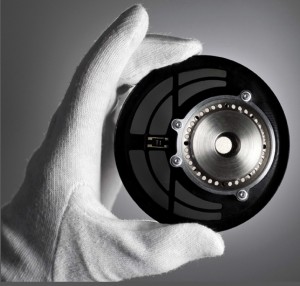
Tesla Technology
The DT 1350 and 1350 CC:
The DT1350 can be purchased in two different configurations depending on your needs and preference. The DT 1350 model comes with a 1.5 M (4.92 ft.) straight cable which is apropos for portable use and for monitoring music in the studio or on stage. The DT 1350 CC (coiled cord) option comes with a cord that is corkscrewed (remember grandma’s phone in her kitchen, if not, you’re too young and I envy your youth and innocence) which extends to 3.0 M (9.8 ft.) that has the advantage of maintaining the cable close to you without getting snagged on doorknobs and dog leashes. Conveniently, it can extend a further distance than the straight-corded model when the situation arises. I received the Coiled Cord version for this review. I personally dislike most coiled cord headphone cable, advantages or not, but that just my idiosyncrasy. I remember the one on my first real headphone back in the early 70’s on my extremely heavy Koss Pro 4AA caused my head to permanently lean to one side, even to this day. Not really, but you can get my gist. Of course, your mileage may vary, depending on the application.
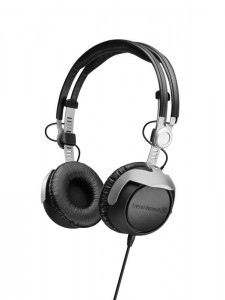
DT 1350
They have a stated impedance of 80Ω, which is very affable for portable, non-amplified applications. Higher impedance earspeakers like Beyer’s T-1 are more challenging to drive, requiring necessary amounts of amplification between the source and your ears, but can yield better sound when paired with the proper components. That’s not to say that all lower impedance headphones don’t sound as good as all higher impedance ones. There are many ingredients in the recipe for successful musical presentations. For example, the T-1 model, even though it is rated at 600Ωs, is highly efficient and requires less power to drive and sounds better than some 300Ω offerings. Just to be clear, you can drive any headphone, regardless of impedance, right out of the headphone jack of an iPhone, but in order to bring it’s performance up to it’s maximum potential, or in layman’s terms, to make it sound good, and maintain appropriate volume levels, it would behoove you to match it up with the proper equipment downstream, to obtain maximum synergy.
The 1350’s are considered a closed back, supraaurul construction, which is an “on-ear” design, as opposed to circumaural, which rests on your head, not on your ears. Their frequency response ranges from 5 to 30,000 Hz and has a nominal SPL (sound pressure level) of 109dB. This model weighs 174 grams. The headband splits into 2 adjustable bands, using two robust pivots just above your ears where the cups meet the bands, which allow the user to separate the bands closer and further apart to accommodate a more comfortable seated position on your head. For me, I find this to be a great asset because I have a big noddle (the bigger the noddle the bigger the brains, no?). Some people have a hard time finding contentment with different headbands, even on great headphones and how can you really enjoy something if you are feeling discomfort? For me, the mole on my head gets a little sore when using certain models like the Sennheiser HD650’s. I like the headphones, but the discomfort pressures me (pardon the pun) to limit my listening session time.
I am a proud, long time owner of an earlier Beyer model, the T50P. The 1350’s are an alternate version of the T50P. Looking at the two models side by side, visually, one can see the same headphone, but with the improved headband and a black plastic cup, vs. the older version which had metal parts.The ear-cups (which are replaceable) both swivel 90° which allow a DJ or other professional to use one ear to monitor the music, while freeing up the other ear for hearing what’s going on in the club or studio. This also great for rotating the cups 90 degrees when you want a break and you can slide them down your neck and rest the cups on your chest. The earcups have a good deal of outside noise attenuation, 25 dB and consist of the same “leather-like” material that separates your head from the headbow, which Beyer calls, “Softskin”. This reminds me of the 1980’s Chrysler Cordoba commercials where Ricardo Monteblan (Wrath of Khan) advertised the seats and interior as being soft, “Corinthian Leather”. A nice way of saying that it is a man-made material. The Softskin material feels supple and pleasant, and it is probably more durable than any cowhide you could obtain in this price range. MSRP of the DT1350 and DT1350 CC are both $279.99.
The DT770 Pro:
The DT770 Pro headphone is considered a closed back reference headphone that Beyer envisioned to be used for monitoring applications. They come in 3 different configurations which make them quite versatile for an abundance of choices. There is a 32Ω version that is specifically aimed at the portable/mobile demographic. The 80Ω version, which is the demo model that I received for this review, is tailored for recording applications within the studio, and finally, the third choice is a 250Ω model that Beyer created for mixing applications in the studio. This allows the user to wear them in an environment where the equipment is all professional grade, and they do more than just play engineers on television…they are engineers.
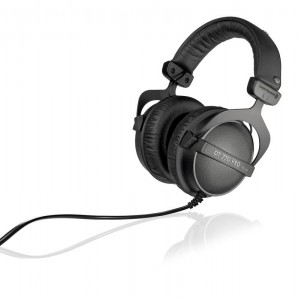
DT 770 Pro 32Ω
The earpads are velour and replaceable. They are larger than the 1350’s and they go over your ear which defines them as circumaural. They are extremely comfortable to most clients, except those like me with huge melon heads (you know, that darn brains thing). For me, they clamp down with too much force on my head. But to be fair, these are new and haven’t been broken in yet. That is a downside of getting review samples that haven’t been around the block once or twice. The upside to that is, getting to experience that “new car smell” more than the average consumer. It’s a dirty job, but hey, someone has to do it! I purchased my lovely wife (does anyone ever say “ugly wife”?) a fantastic pair of Beyer’s DT880’s back in the day, 10 years ago, which are still her favorite headphones and they were very tight on me when they were new, and now are one of my most comfortable headphones. Err…I mean one of “her” most comfortable headphones. “Yeah, that’s right…I bought them for you, honey, but just let me know if you don’t really have any need for them”. (:->).
The cable is a single-sided cord, attached to the left cup, and there is a drawstring bag included in the box with the usual accessories, even one of those 2-pronged airplane adapter thingies. The frequency response is also a claimed 5 to 35,000 Hz with a SPL of 96dB. Both models described here come with a 1/8” to ¼” adapter.
These 770 Pros, along with it’s sister 880s (you know, the ones for my wife, wink… wink) and the top of this line 990 Pros all come from roots that Beyer first planted in the early 1980’s. They have stood the test of time, are in thousands of people’s homes all around the world, and have been the launching pad for all the models that have since evolved, and for future offerings, which a birdie in Beyer whispered to me, are just around the corner. I am very excited and hope to get my grubby little paws around those (hint…hint!)
My 32Ω version is the latest and greatest release, which has been optimized to be better suited to be paired up with mobile applications. MSRP on these puppies is $299.99.
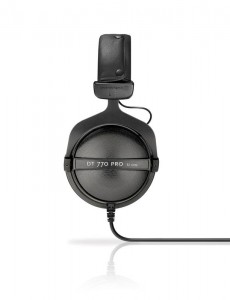
How they sound (compare and contrast):
What are we looking for in a headphone when we are choosing a model that is in our specified price range? I feel that we are looking for the best craftsmanship and sound quality that can be acquired within our stated budget. If you live in a “money is no object” lifestyle, then you are in a fortunate situation, and usually if you plunk down lot’s-o-dough, you will get a good return on your investment. Well, the same holds true for the rest of us 99%-ers. We want to lay out a sum that is sizeable by our standards and means, but that doesn’t mean that we don’t want or don’t need something that sounds top notch. By my experience, us common-folk have higher expectations from our purchases because we don’t have as much expendable cash, and we want to make darn sure that we get a lot of bang for our buck! Both of the Beyer-Dynamic models give us just that. Whether you buy either the DT1350 or 770, you are assured of getting a well constructed, aesthetically pleasing, and performance rich pair of cans that sound true to the recording. This what a studio speaker monitor or headphone needs to be. When mixing or mastering, an engineer doesn’t want to blur the sounds with coloring and additives. They need a neutral, realistic, sound entering their ears that actually sounds like what the guys/gals in the other room are playing. Most headphones have some sort of color to them, that is a result by design, but a quality monitor shouldn’t be the same as headphone that is marketed for the hip-hop culture, or modern day pop recordings that have over compressed, grossly exaggerating range extremes, and are mastered for “louder is better” radio broadcasts.
If you are a bass head, looking for more outside isolation, then I believe that the 770’s are more for you. If you want to be more in touch with your surrounding environment and have some flexibility to keep one ear to the ground, then the 1350’s would probably be a better choice.
When analyzing the soundstage between the two units, I find that smaller 1350s fill a slightly loftier space, from the back of my earlobes to just above my eyes. There is very little in the way of an “imaginary” speaker right in front of you, the way a properly setup speaker system can offer. With the 770’s, I find that you are hearing more directly from each ear cup and the stage is slightly smaller, maybe just to the space between your ears and your eyes. This is more a choice for monitoring than for casual listening, but that is exactly what these two models advertise that they do. The 1350’s offer more detail at the top end, and the 770’s offer more of a subsonic output under 200htz. The 770’s roll off more quickly in the higher frequencies, while the 1350’s sustain slightly longer. The midrange on either model is somewhat similar, and they are consistently neutral. If you are looking for a “rose-colored glasses” type of presentation, then studio monitors aren’t your gig. If you are looking for a sound that closely represents what actually went on while recording, then these are more of a appropriate choice.
Both of these headphone models achieve just what they are designed to do, and they offer the client two different options to better address their listening needs. Their performance is rock-steady and consistent, and if your needs are to monitor or record music, with occasional time spent for just kicking back enjoying some tunes, then you can’t go wrong choosing between the Beyerdynamics’ 1350 and 770 headphones, especially in this affordable price range!
Specifications:
Included throughout this review.
Associated Components:
-Astell and Kern portable AK240 w/ DSD and FLAC music files
-LG G3 Android phone w/FLAC and 320 kbps music files
-Apple iPhone 5C with Oppo HA-2 Amp Dac combo w/ ALAC music files
-CEntrance HiFi-M8 Amp Dac combo














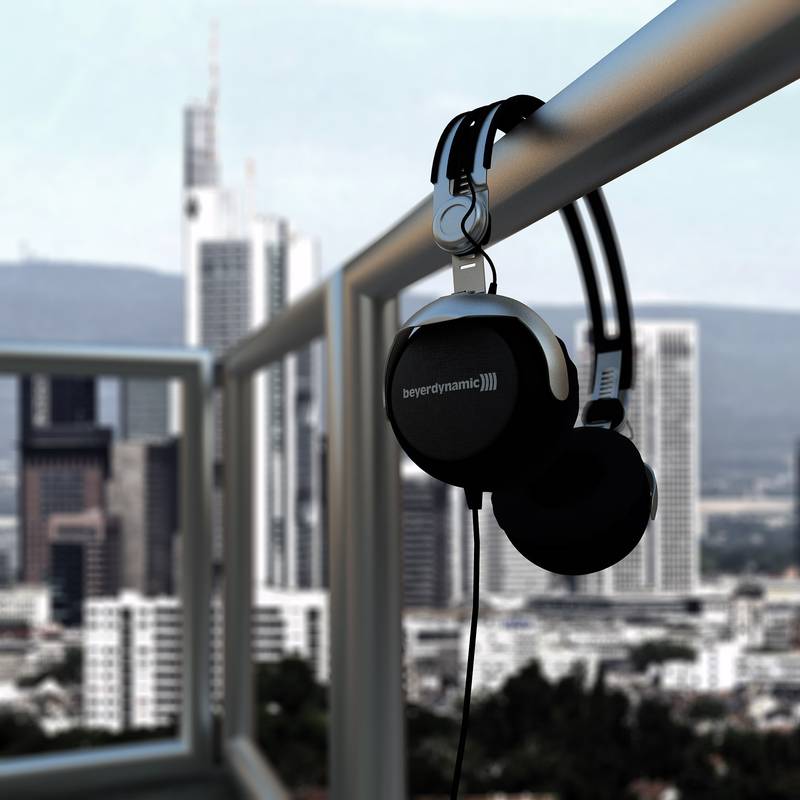
Reply
Reply
Reply
Reply
Reply
Reply
Want to join discussion?
Feel free to contribute!